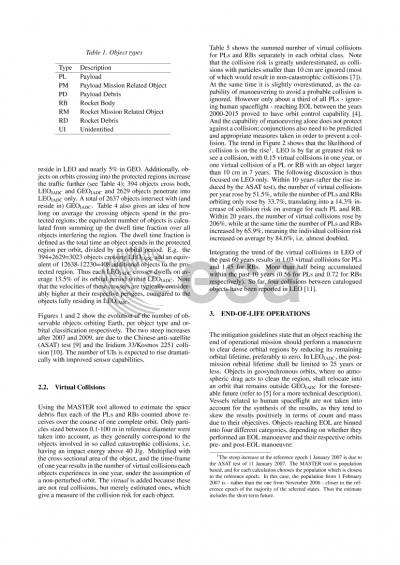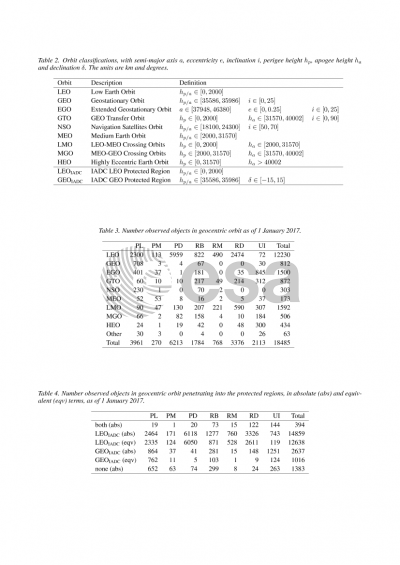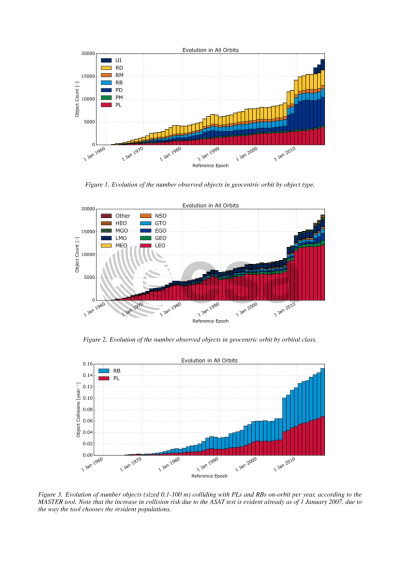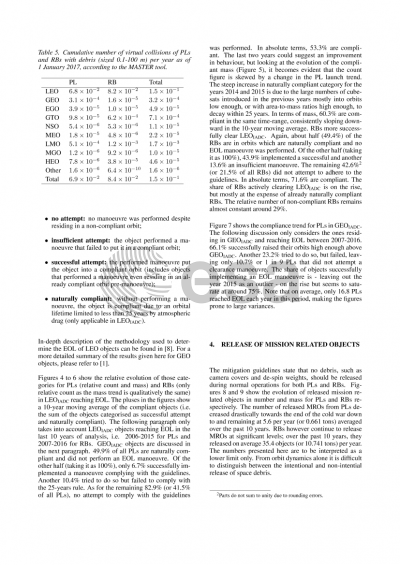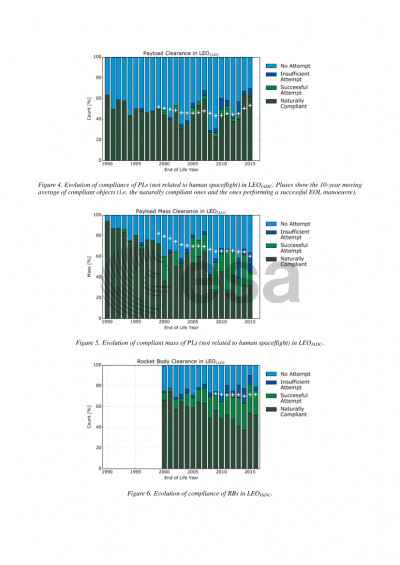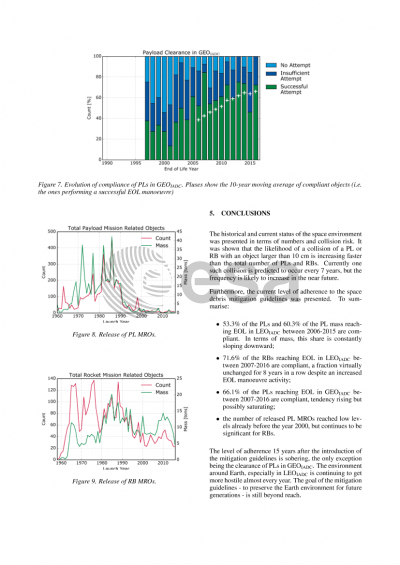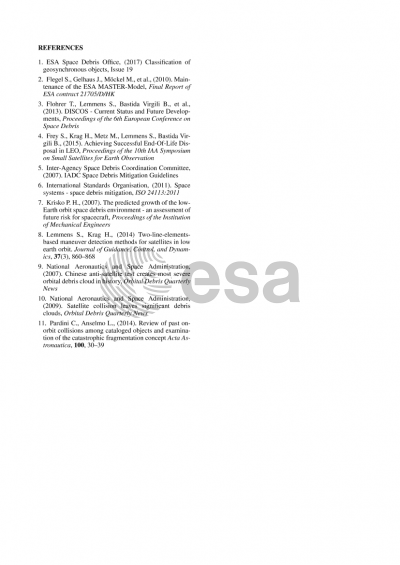Document details

Abstract
To counter an ever increasing number of man-made objects orbiting Earth which are endangering current and future Space missions, the Space Debris Mitigation (SDM) guidelines, issued by the Inter-Agency Space Debris Coordination Committee (IADC), were first published in 2002. These guidelines served as a model for various international and national standardisation and regulation activities on SDM. One part of the research conducted at the Space Debris Office (SDO) at the European Space Operations Centre (ESOC) is to study and monitor the level of implementation of these guidelines.
This report summarises the status of the near Earth Space environment by illustrating the number of objects, mass, and cross-sectional area, orbiting Earth. The current and historical environment is assessed, with a focus on the interference of the IADC protected regions, the Low Earth Orbit (LEO) and the Geostationary Orbit (GEO). It includes an estimate of the evolution of the cumulative space debris flux incident on the payloads and rocket bodies computed with ESA’s Meteoroid and Space Debris Terrestrial Environment Reference (MASTER) tool. And it discusses the current level of adherence to the SDM guidelines in terms of post mission disposal (PMD), the release of mission related objects (MROs), and the suppression of on-orbit fragmentations. The positive effects of actively implemented PMD manoeuvres on reducing the probability of on-orbit collisions is reviewed in-depth. The current level of adherence of payloads in LEO to the PMD guidelines, less than 10%, however is far from the levels required to stabilise the environment.
Preview

